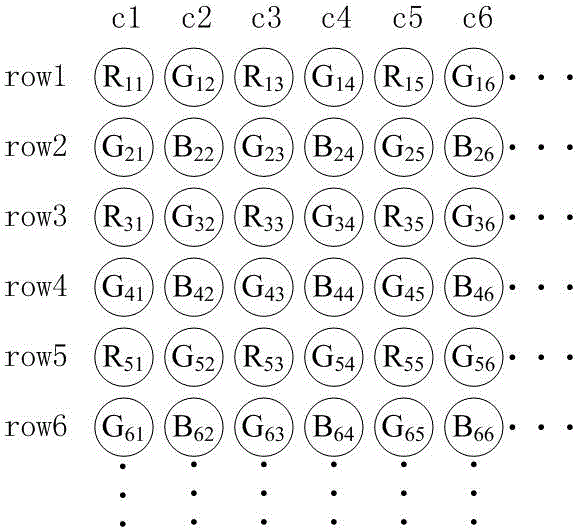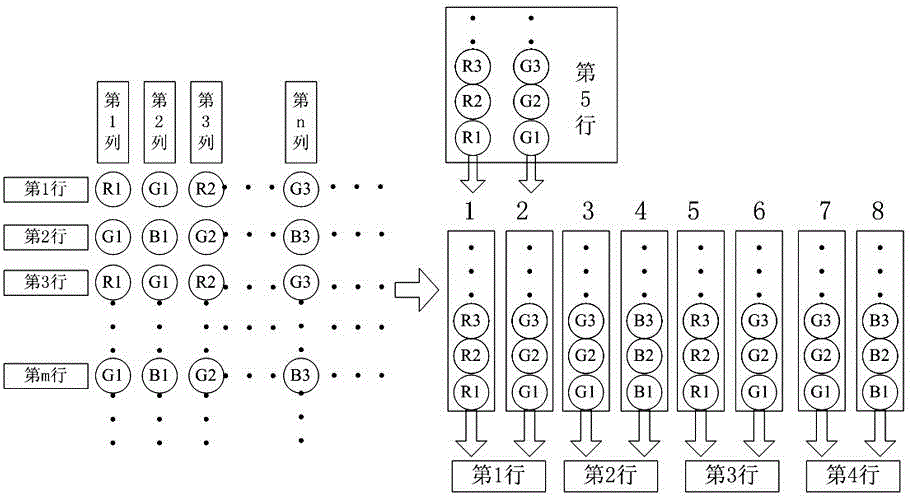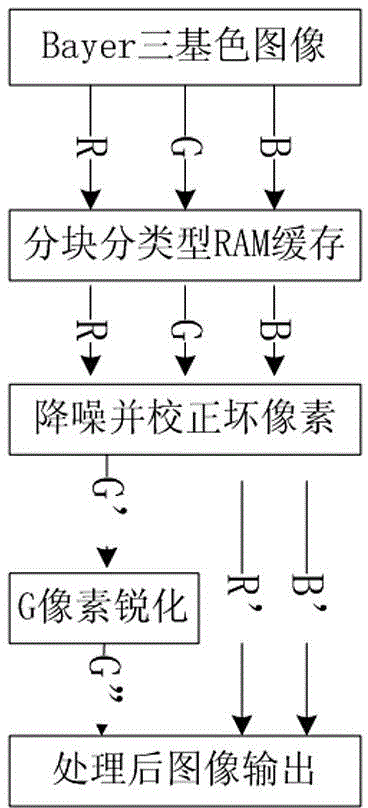Low-power-consumption real-time noise-reduction and sharpening merged preprocessing algorithm for CMOS image sensor
An image sensor and low-power technology, applied in the field of low-power real-time noise reduction and sharpening preprocessing algorithm, can solve the problems of unfavorable saving of hardware resources, overall power consumption, and high algorithm complexity
- Summary
- Abstract
- Description
- Claims
- Application Information
AI Technical Summary
Problems solved by technology
Method used
Image
Examples
Embodiment Construction
[0050] attached figure 1 is the Bayer model diagram of the color filter array CFA image, with figure 2 It is a schematic diagram of the process of loading Bayer data into half-depth memory. As can be seen from the figure, the low power consumption real-time noise reduction sharpening preprocessing algorithm combined with the CMOS image sensor of the present invention adopts the color filter array CFA to divide the input optical signal into the three primary colors of red, green and blue RGB, that is, RGB three kinds of pixels; The method of accessing data by block and type is used for data caching, the spatial adaptive noise reduction algorithm is used to reduce the noise of RGB pixels, and a new operator template is generated by combining the Laplacian operator and the smoothing operator G pixels for sharpening.
[0051] The method of accessing data by block and type on the chip is used for data caching, including storing and reading the RG or GB row data of Bayer data res...
PUM
 Login to View More
Login to View More Abstract
Description
Claims
Application Information
 Login to View More
Login to View More - R&D
- Intellectual Property
- Life Sciences
- Materials
- Tech Scout
- Unparalleled Data Quality
- Higher Quality Content
- 60% Fewer Hallucinations
Browse by: Latest US Patents, China's latest patents, Technical Efficacy Thesaurus, Application Domain, Technology Topic, Popular Technical Reports.
© 2025 PatSnap. All rights reserved.Legal|Privacy policy|Modern Slavery Act Transparency Statement|Sitemap|About US| Contact US: help@patsnap.com



